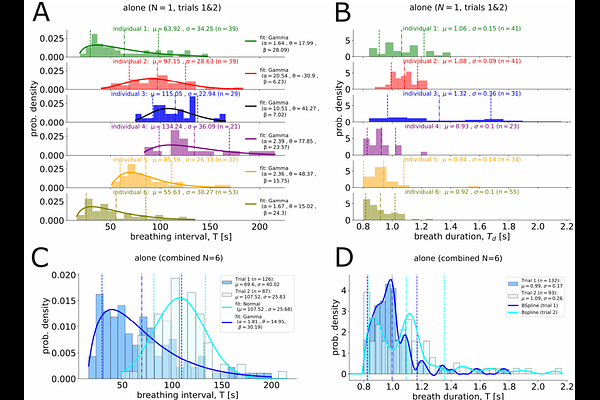Synchronization of the collective air-breathing behavior in juvenile Arapaima gigas

Synchronization of the collective air-breathing behavior in juvenile Arapaima gigas
Bartashevich, P.; Francisco, F. A.; Escurra-Alegre, A.; Schaefer, F.; Wuertz, S.; Krause, J.; Kloas, W.; Bierbach, D.
AbstractAnimal collectives are capable of performing behaviors with high degrees of synchrony though their members might differ consistently and substantially in the focal behavior when alone. It is thus not entirely understood how these consistent differences in behavior at the individual level can be (socially) integrated into synchronized behaviors at the collective level. Here we show an unprecedented synchronized behavior in fish - the collective air-breathing of juvenile Arapaima gigas. Individuals of this obligate air-breathing fish from South America differed in their time between consecutive breaths when recorded alone in an aquaculture facility. However, when together in a shoal of about 200 same aged individuals, breathing is executed by a substantial portion of the shoal - within the same second. Our analysis of the individual and collective breathing patterns supported by stochastic individual-based simulations of inherently non-periodic coupled oscillators revealed that this degree of collective synchronization could be achieved by having some kind of assortative interaction rules where individuals respond towards one cluster/subgroup members stronger than to other cluster/subgroup members. By integrating this cluster synchrony rule we could successfully simulate highly synchronized collective behavior with varying proportions of otherwise diverse individuals taking part, matching our experimental observations and providing a mechanism to synchronize agents that differ consistently in the behavior in focus when in isolation.